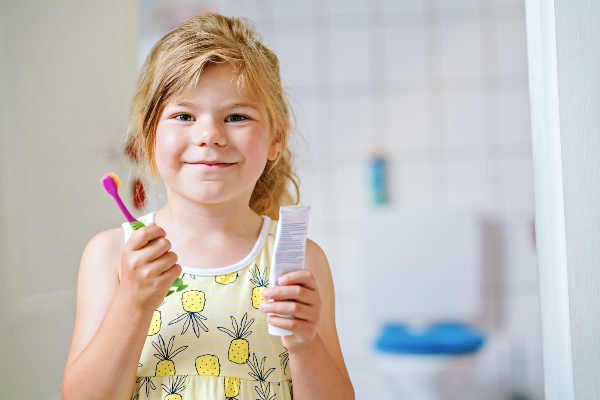When are Stainless Steel Crowns Necessary Instead of a Filling [Childrens Dentistry]

While baby teeth do not last forever and typically all fall out by the time a child is 13 years of age, it is important for children to take care of these temporary teeth and go to a childrens dentistry to ensure they are healthy. However, sometimes tooth decay and cavities can cause extreme harm to baby teeth. One tactic often used by pediatric dentists to address these issues is placing a stainless steel crown on the affected tooth.
Tooth decay in children
Children can experience tooth decay, or the destruction of tooth enamel, over time due to a diet high in sugar, insufficient fluoride consumption or poor oral hygiene. Initial signs of decay often include visible white spots on the teeth and possible tooth sensitivity. If allowed to continue, cavities form on the teeth as acids eat away at the teeth and create holes. Initially, these holes appear light brown in color. If plaque continues to build and the cavity is not immediately detected, it becomes even deeper and turn a darker brown or black.
Diagnosing cavities
Often, cavities cause pain to the affected tooth and sensitivity to very hot, cold or sweet foods and beverages. However, some people do not notice any symptoms, and young children may not be able to communicate their pain effectively. Dentists are often able to identify signs of tooth decay or cavities at during an exam or by taking an X-ray. It is a good idea to regularly make an appointment with a children dentistry to catch a cavity before it gets worse or to go in right away if noticing any symptoms.
Treating cavities at a childrens dentistry
If caught early on, a cavity can often be treated using a filling to patch the hole. This process involves numbing the mouth using a local anesthetic, removing decay with a dental drill and then filling in the cavity with a tooth-colored composite.
However, fillings cannot be used for teeth with very large or multiple cavities. In these situation, stainless crowns are often used instead. This option lasts longer than a filling and can be used on teeth where extensive decay has occurred. A stainless steel crown is not very aesthetically appealing, which is not always a concern for molars, situated in the back of the mouth. If a cavity forms on a visible front tooth, a plastic white facing can be attached instead.
Conclusion
Like permanent teeth, baby teeth are essential for speaking and chewing properly, and also prevent future overcrowding by acting as a placeholder for permanent teeth. For this reason, when cavities and decay affect a child’s baby tooth, it is important to explore possible actions to save the tooth rather than just remove it until an adult tooth grows in. If looking for a longer lasting option for dealing with severe tooth decay, a stainless steel crown placed at a childrens dentistry is one solution.
Request an appointment here: https://www.grandparkwaypediatricdental.com or call Grand Parkway Pediatric Dental at (832) 579-0960 for an appointment in our Richmond office.
Check out what others are saying about our services on Yelp: Read our Yelp reviews.
Recent Posts
Dental fillings for kids are crucial in preventing many dental issues. Baby teeth can develop cavities. Correcting this problem is important for developing permanent teeth. Here are the details on how preventive dentistry uses dental fillings for kids.Research shows that many school-age kids suffer from cavities. This disease is common even if it is preventable.…
Dental fillings for kids are one of the most common treatments for tooth decay in children. The earlier tooth decay is detected in a child’s tooth, the easier it is to treat. Let us examine why treating childhood tooth decay is crucial and how a pediatric dentist treats it.According to the Centers for Disease Control…
Dental fillings for kids can be nerve-wracking for some kids, likely due to the necessary tools. While we aim to make this simple process as smooth and painless as possible, we need your help. Getting a firm grasp on what your kids can expect during this procedure and how to prevent a future need for…
Getting dental fillings for kids can help improve your child’s dental health. It can restore the affected teeth and relieve your child’s pain. Understanding the process can help you prepare your child for the next appointment. Here are the details on what parents like you must know about dental fillings for kids.The dentist will discuss…


